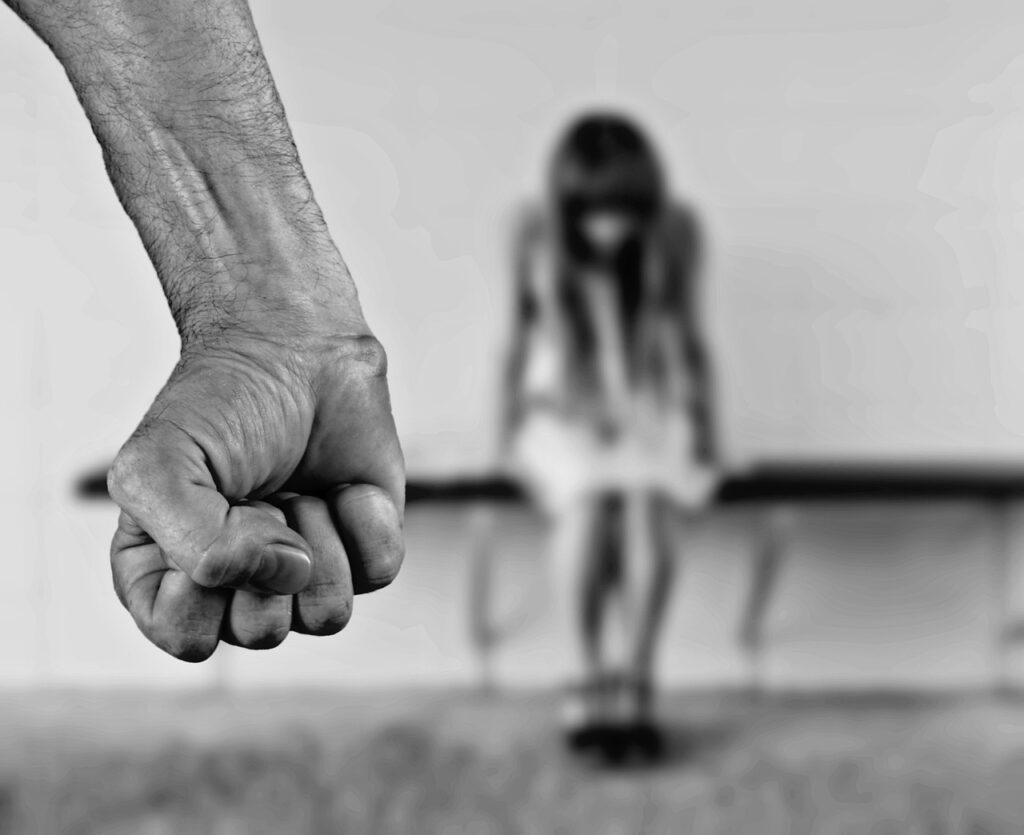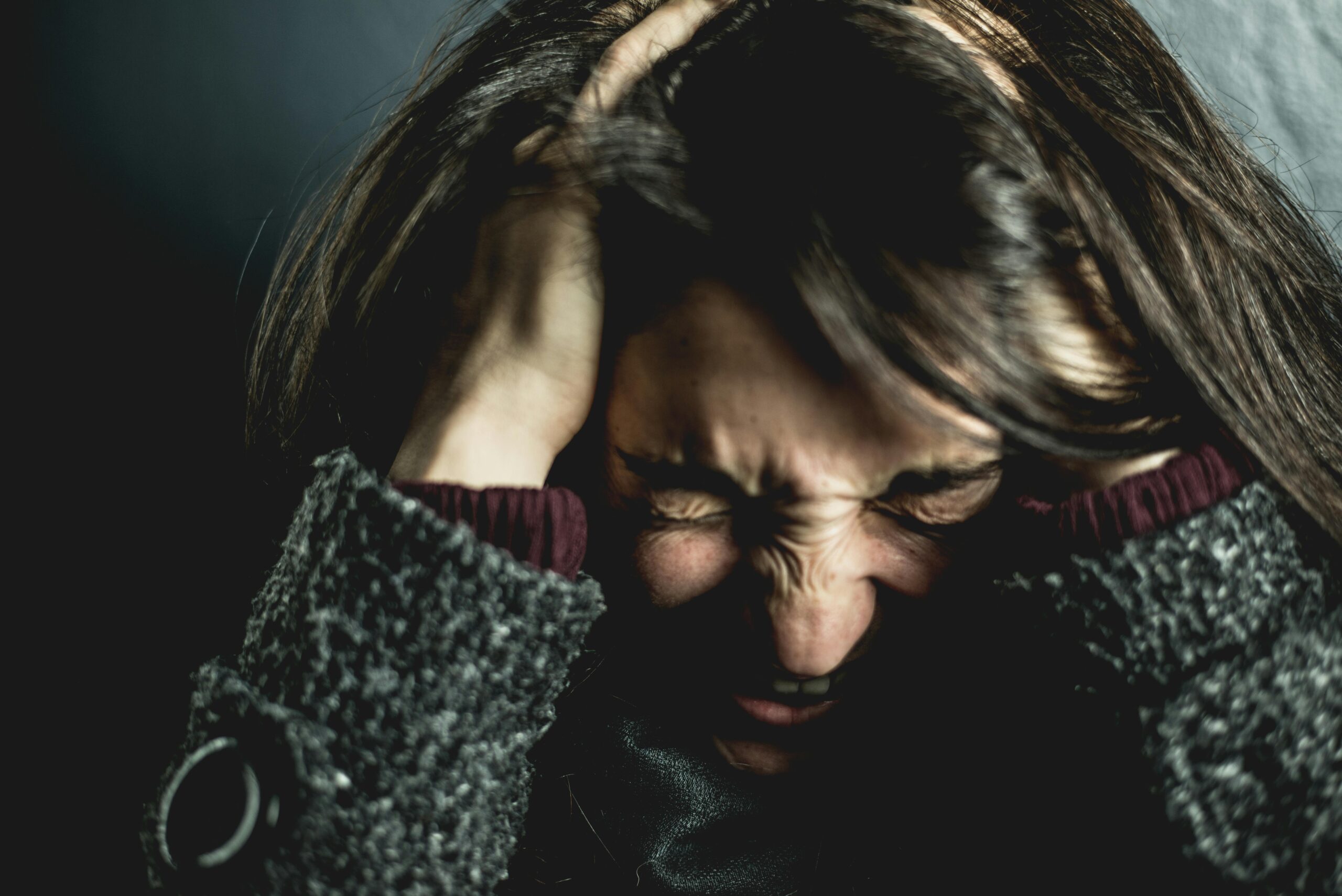The scars of trauma tell a story of survival, not defeat.
At askdoctor.ai, This content is written with knowledge about trauma and PTSD, healing strategies, and inspiring stories from those who have walked this path before. Our goal isn’t just to inform—it’s to uplift, offering hope, encouragement, and practical guidance as you move toward healing. You are never alone. With understanding, support, and the right tools, you can reclaim peace, strength, and joy. We’re here to inspire hope and empower you to overcome difficult moments with your mental health.
Difference Between PTSD and Trauma, and How They Relate
Post-Traumatic Stress Disorder (PTSD) and trauma are closely related but distinct concepts. Trauma refers to an emotional or psychological response to a distressing event, such as an accident, natural disaster, or personal assault. Trauma affects people differently—some may recover naturally over time, while others may experience lasting emotional and physical effects. Common reactions to trauma include shock, anxiety, sadness, and difficulty coping. It can cause temporary or long-term distress, but not everyone who experiences trauma develops PTSD.
PTSD, on the other hand, is a mental health condition that develops in response to experiencing or witnessing a traumatic event. It can result from incidents such as military combat, natural disasters, serious accidents, or personal assaults. PTSD is characterized by intrusive memories, flashbacks, nightmares, avoidance of trauma-related triggers, heightened anxiety, and emotional numbness. These symptoms can persist for months or even years, significantly affecting daily life. is a clinical mental health condition that arises from severe or prolonged exposure to traumatic events. It is characterized by intrusive memories, avoidance behaviors, heightened anxiety, and emotional numbness.
Understanding the difference between PTSD and trauma is crucial for seeking appropriate support and treatment. While trauma may naturally resolve over time, PTSD often requires professional intervention.
What is Trauma: How it Works
Trauma is a psychological or emotional response to a deeply distressing or disturbing event. It can result from experiences such as accidents, abuse, natural disasters, or violence. Trauma can affect a person’s thoughts, and emotions.
Symptoms of Trauma
Here are some common symptoms of trauma:
Emotional & Psychological Symptoms:
- Anxiety and fear
- Sadness or depression
- Irritability or mood swings
- Guilt or shame
- Feeling numb or disconnected
- Difficulty concentrating
- Flashbacks or intrusive thoughts
Physical Symptoms:
- Fatigue or exhaustion
- Insomnia or nightmares
- Rapid heartbeat or sweating
- Muscle tension or body aches
- Headaches or stomach issues
Behavioral Symptoms:
- Avoiding people, places, or situations
- Increased use of alcohol or drugs
- Withdrawal from loved ones
- Difficulty trusting others
- Engaging in risky behaviors
Causes of Trauma
- Physical or Emotional Abuse (e.g., domestic violence, child abuse)
- Accidents and Injuries (e.g., car crashes, serious falls)
- Natural Disasters (e.g., earthquakes, floods, hurricanes)
- Violence or Crime (e.g., assault, robbery, war)
- Loss of a Loved One (e.g., sudden death, separation)
- Medical Trauma (e.g., serious illness, surgery complications)
- Neglect or Abandonment (especially in childhood)
- Witnessing Traumatic Events (e.g., witnessing violence or disasters)
- Bullying or Harassment (long-term emotional distress)
Diagnosis of Trauma
Diagnosing trauma, particularly Post-Traumatic Stress Disorder (PTSD), involves a comprehensive assessment of symptoms and experiences. Key diagnostic criteria include:
- Exposure to a Traumatic Event: Directly experiencing, witnessing, or learning about a traumatic event involving actual or threatened death, serious injury, or sexual violence.
- Intrusive Symptoms: Recurrent, involuntary distressing memories, dreams, or flashbacks of the traumatic event.
- Avoidance Behaviors: Efforts to avoid distressing memories, thoughts, feelings, or external reminders associated with the trauma.
- Negative Changes in Cognition and Mood: Inability to remember aspects of the event, negative beliefs about oneself or the world, distorted blame, persistent negative emotions, diminished interest in activities, feelings of detachment, or inability to experience positive emotions.
- Alterations in Arousal and Reaction: Irritability, reckless behavior, hypervigilance, exaggerated startle response, concentration difficulties, or sleep disturbances.
Treatment of Trauma
Trauma treatment, particularly Post-Traumatic Stress Disorder (PTSD), involves various evidence-based approaches. Key treatments include:
- Trauma-Focused Psychotherapies: These are the most effective treatments for PTSD and include:
- Cognitive Processing Therapy (CPT): A type of cognitive-behavioral therapy that helps patients reframe negative thoughts related to trauma.
- Prolonged Exposure Therapy (PE): Involves repeated, detailed imagining or recounting of the trauma in a safe environment to reduce its emotional impact.
- Eye Movement Desensitization and Reprocessing (EMDR): Integrates traumatic memories with eye movements or other forms of rhythmic, left-right stimulation.
- Pharmacotherapy: Medications can be effective, especially when combined with psychotherapy. We will discuss it in the PTSD treatment section.
- Trauma-Informed Care: An approach that involves understanding, recognizing, and responding to the effects of all types of trauma. It emphasizes physical, psychological, and emotional safety for both providers and survivors.
- Self-Care and Coping Strategies: Encouraging routines that promote well-being, such as:
- Regular Exercise: Engaging in physical activity to reduce stress.
- Mindfulness Practices: Incorporating techniques like meditation to manage anxiety.
- Adequate Sleep: Maintaining consistent sleep patterns to improve mood and energy levels.

What is PTSD: How it Works
Post-Traumatic Stress Disorder (PTSD) is a mental health condition that develops after experiencing or witnessing a traumatic event, such as violence, accidents, natural disasters, or abuse. People with PTSD may experience intense flashbacks, nightmares, severe anxiety, and emotional distress. PTSD needs professional treatment.
Symptoms of PTSD
Post-Traumatic Stress Disorder (PTSD) manifests through a variety of symptoms that can be categorized into four main clusters:
1. Intrusive Thoughts:
- Flashbacks: Reliving the traumatic event as if it’s happening again.
- Nightmares: Disturbing dreams related to the trauma.
- Distressing Memories: Unwanted, recurring memories of the traumatic event.
2. Avoidance Behaviors:
- Avoiding Reminders: Steering clear of places, people, or activities that evoke memories of the trauma.
- Suppressing Thoughts and Feelings: Deliberate efforts to avoid thinking or talking about the traumatic event.
3. Negative Alterations in Cognition and Mood:
- Emotional Numbness: Difficulty experiencing positive emotions or feeling detached from others.
- Negative Beliefs: Persistent and distorted beliefs about oneself or the world (e.g., “I am bad,” “The world is completely dangerous.
- Diminished Interest: Loss of interest in previously enjoyed activities.
4. Arousal and Reactivity Symptoms:
- Hypervigilance: Being overly alert or on guard for potential dangers.
- Exaggerated Startle Response: Being easily startled by ordinary stimuli.
- Irritability or Aggressive Behavior: Experiencing sudden anger or irritability.
- Sleep Disturbances: Difficulty falling or staying asleep.
Causes of PTSD
PTSD can develop after experiencing or witnessing a traumatic event. Some of the most common causes include:
- Exposure to Violence – War, physical assault, domestic violence, or terrorist attacks.
- Serious Accidents – Car crashes, workplace injuries, or other life-threatening events.
- Natural Disasters – Earthquakes, floods, hurricanes, or wildfires.
- Sexual Assault or Abuse – Rape, molestation, or childhood abuse.
- Sudden Loss of a Loved One – Death of a close family member or friend, especially in unexpected or violent circumstances.
- Medical Trauma – Life-threatening illnesses, emergency surgeries, or long-term hospitalization.
- Childhood Neglect or Abuse – Persistent emotional, physical, or psychological abuse during early years.
- Witnessing a Traumatic Event – Seeing violence, accidents, or severe injury happen to someone else.
- First Responder Trauma – Repeated exposure to traumatic events as a firefighter, police officer, or healthcare worker.
Not everyone exposed to trauma develops PTSD. Genetic factors, brain chemistry, previous trauma, and lack of social support can increase the risk of developing PTSD.
Diagnosis of PTSD
Diagnosing PTSD typically involves a detailed assessment by a mental health professional based on standardized criteria. The diagnosis includes:
- Clinical Interview – A psychologist or psychiatrist assesses symptoms, trauma history, and impact on daily life.
- DSM-5 Criteria – PTSD diagnosis follows the Diagnostic and Statistical Manual of Mental Disorders (DSM-5), which includes:
- Exposure to Trauma – Direct or indirect exposure to a life-threatening event or severe injury.
- Intrusive Symptoms – Flashbacks, nightmares, distressing memories, or physiological reactions to trauma reminders.
- Avoidance – Avoiding people, places, thoughts, or feelings related to the trauma.
- Negative Mood & Cognition Changes – Persistent negative thoughts, emotional numbness, and memory gaps related to the trauma.
- Increased Arousal & Reactivity – Hypervigilance, exaggerated startle response, irritability, sleep disturbances.
- Duration of Symptoms – Symptoms must persist for more than one month.
- Significant Impairment – Symptoms must interfere with daily life, work, or relationships.
- Standardized PTSD Questionnaires – Tools like the PTSD Checklist (PCL-5) or Clinician-Administered PTSD Scale (CAPS-5) help assess symptom severity.
- Ruling Out Other Conditions – PTSD symptoms may overlap with anxiety, depression, or substance use disorders, requiring careful evaluation.
Treatment of PTSD
Effective treatment strategies encompass both psychological therapies and pharmacological interventions.
1. Psychological Therapies:
- Trauma-Focused Cognitive Behavioral Therapy (TF-CBT): This approach addresses negative thought patterns and behaviors associated with trauma. Techniques include exposure therapy, cognitive restructuring, and stress inoculation training.
- Prolonged Exposure Therapy (PE): A form of CBT that helps individuals confront trauma-related memories and situations in a controlled manner, reducing avoidance behaviors and emotional distress over time.
- Eye Movement Desensitization and Reprocessing (EMDR): Combines guided eye movements with the processing of traumatic memories, aiming to reduce the emotional impact of these memories.
2. Pharmacological Treatments:
- Selective Serotonin Reuptake Inhibitors (SSRIs): Antidepressants such as sertraline (Zoloft) and paroxetine (Paxil) are FDA-approved for PTSD treatment and help alleviate symptoms like depression and anxiety.
- Serotonin-norepinephrine reuptake Inhibitors (SNRIs): Medications like venlafaxine (Effexor) have shown efficacy in reducing PTSD symptoms by influencing neurotransmitters related to mood regulation.
3. Complementary Approaches:
- Self-Care Practices: Engaging in regular physical activity, maintaining a balanced diet, ensuring adequate sleep, and practicing relaxation techniques can support overall well-being and enhance treatment outcomes.
Individuals experiencing PTSD symptoms must consult with qualified healthcare professionals to determine the most appropriate treatment plan tailored to their specific needs.
Real-life Success Stories

Photo by Andre Furtado
The journey to recovery is different for everyone, but many have successfully managed PTSD through evidence-based treatments such as trauma-focused therapy, cognitive behavioral therapy (CBT), and medication. Some also find solace in holistic approaches like mindfulness, yoga, and support groups. These treatments empower individuals to regain control over their lives, reframe their experiences, and foster emotional growth.
Real-life success stories of people overcoming PTSD serve as powerful reminders that healing is possible. They highlight the strength of the human spirit and the effectiveness of proper support, therapy, and self-care. From war veterans reclaiming their lives to abuse survivors finding purpose and joy again, these stories inspire hope and provide valuable insights into the healing process.
We will explore inspiring real-life stories of individuals who have triumphed over PTSD and trauma. These accounts not only shed light on the struggles faced by many but also offer hope to those still navigating their paths toward recovery.
1. Katy Pasquariello Healing from Childhood Trauma
Katy’s personal stories walk through the abuse she encountered as a child, how she overcame it, and advice on spotting signs of child abuse. Katy Pasquariello is a freshman at Community High School. She occupies her time playing saxophone, writing short stories, and making awful jokes. Katy is very passionate about educating others on child trauma and helping people who have gone through it. Moreover, she is a part of the CHS Jazz program and went with the program to Tennessee to perform with Victor Wooten. When she is not playing saxophone or helping others, you can find her cuddling her dog Bo and watching Chopped. This is her first time doing a TEDx talk.
2. Susanne recovers from PTSD – Success Story.
Listen to Susanne as she tells her explosive success story and how finding Dr. SARNO and the SIRPA Approach helped her to recover from PTSD.
3. Elizabeth Ferreira Recovering from Complex PTSD
4. Inspiring Stories of Trauma Recovery
In this video, we shared three remarkable experts who share transformative perspectives on overcoming negative self-talk, rebuilding trust with your body after trauma, and understanding the fascinating connection between physical movement and mental health. From revolutionary insights about the vagus nerve’s role in trauma to practical strategies for self-compassion, this video provides actionable wisdom for anyone on a healing journey. Learn how group therapy can break patterns of isolation, why quarantine became an unexpected catalyst for deep healing, and the groundbreaking research linking body rotation to mental well-being.
Whether you’re a mental health professional, a trauma survivor, or someone seeking personal growth, this conversation provides essential tools for building resilience. Furthermore, it emphasizes the importance of fostering genuine self-acceptance. By engaging in this discussion, you will gain valuable insights that can support your journey toward healing and growth. Features enlightening discussions with Thais Gibson on emotional reprogramming, Elisabeth’s journey of self-discovery, Iris’s transformation through group therapy, and Melanie’s revolutionary work connecting physical therapy with mental health.
References:
Wikipedia about PTSD
US Department on Veterans Affairs
National Institute of Mental Health about PTSD
National Center for PTSD






Leave a Reply